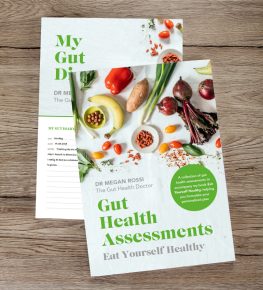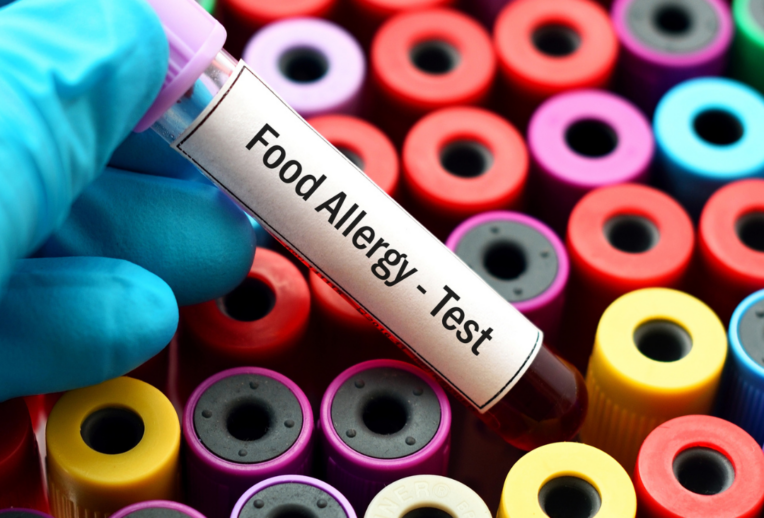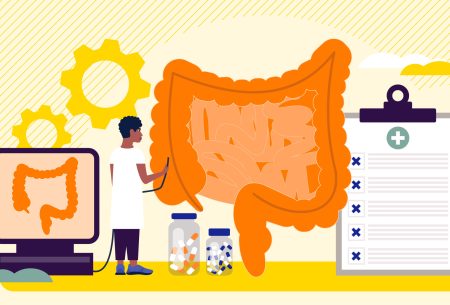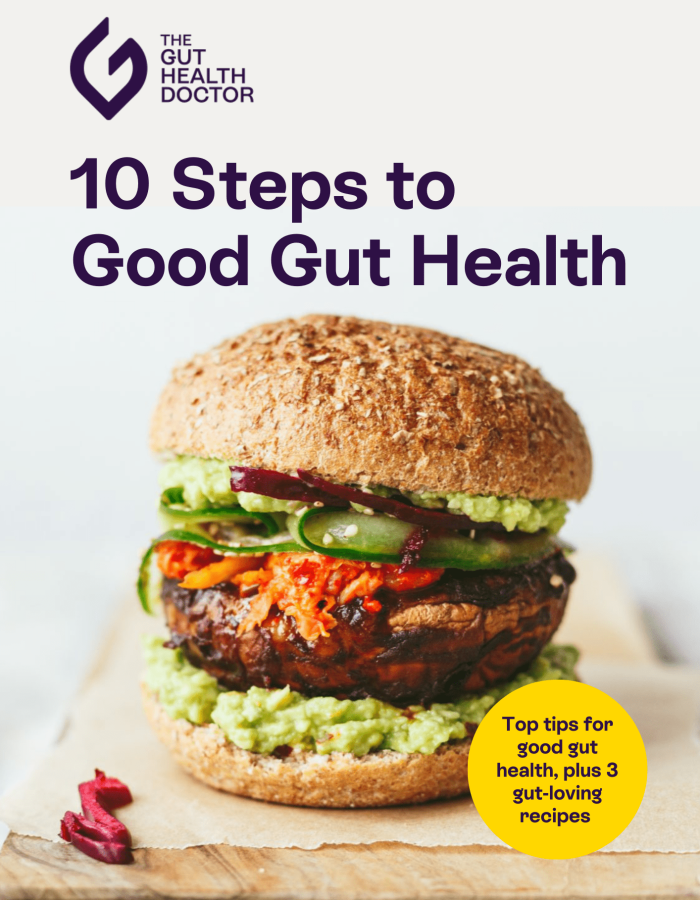The simple complicated truth
Everyone craves clarity in their lives. This is particularly true when it comes to our health. If we feel unwell, we want to know why. We want a clear explanation and ideally, a quick fix. Nothing could be more natural than this desire for clarity, but it can create problems when it leads us to rush for simple answers when the truth is more complex. So what is the truth about food allergy testing?
I see this in my work all the time. When people notice that they are having a reaction to food they assume they have an allergy. Many reach for what feels like the most readily available solution: food allergy testing. There are countless mass market providers, and so this is many peoples’ first port of call.
It is tempting to think that we can simply test for allergy, identify the problem food, remove it from our lives and move on. Alas, this is not always the case. To understand why, first we need to know the difference between ‘allergy’ and ‘intolerance’.
Food allergy vs. Intolerance
This is not a matter of degree. Intolerance is not a mild version of allergy. The symptoms are often the same, but the mechanisms which cause each are very different.
Allergy is caused by the immune system’s response to food. That response can be immediate, but it can also involve a delayed reaction, even as much as 48 hours after ingestion.
In the case of immediate food allergy, our bodies produce antibodies (IgE) against a food protein (allergen), which can result in a variety of symptoms, e.g., hives, itching, vomiting, etc. Delayed food allergy also entails an immune system reaction, but instead of antibodies, other types of immune cells are involved. Science is still getting to grips with the precise mechanisms that cause delayed food allergy – yet more unwelcome uncertainty!
Intolerance is completely different. In this case it is the digestive system, rather than the immune system, which causes the reaction. Another difference is that, whereas allergy mostly involves reactions to proteins, intolerance mostly involves other components of food. For example, lactose intolerance happens when the enzyme which breaks down lactose – a carbohydrate – is not present in the digestive system. Intolerance can also be in reaction to a multitude of chemicals which either occur naturally in food or are added to foods during processing (e.g., histamines, salicylates, sulphites, etc.)
Why difference matters
Why should you care about the difference between allergy and intolerance?
Well firstly, because there is no such thing as a test for intolerance (lactose intolerance being the one important exception). Similarly, there are no validated tests for delayed food allergy.
The only way to screen for intolerance or delayed food allergy is to exclude suspected foods from the diet and systematically reintroduce them while monitoring for reactions.
So if someone has intolerance or delayed allergy and they do an allergy test, the true cause of their adverse reactions will remain hidden. Worse still, chances are the allergy test will send them in completely the wrong direction, leading to years of wasted time, money and health.
Sadly I have encountered this many times.
Is an allergy test appropriate for me?
Some of the mass market providers providing allergy tests may genuinely have good intentions, but in my opinion many others are simply predating on peoples’ desire to find simple answers.
Thankfully, there are some simple steps to follow when trying to understand whether you have an allergy or intolerance.
There are a small number of quite important exceptions to what I am about to say, which is why you need a professional guiding you. I’ll list the exceptions* at the bottom of this article, but the following three steps will help guide you through the majority of cases.
To decide if allergy testing is appropriate in your case, ask yourself whether the following three points are true for you:
A) You have symptoms such as visible swelling of the lips, mouth and eyes / raised itchy hives (urticaria) / difficulty breathing / vomiting
B) Your symptoms come on between 5 minutes to 1 hour of eating the suspected food
C) Your symptoms are reproducible i.e. you get a reaction every time you eat that food protein. For example, if you get a reaction after consuming milk or cheese but can eat chocolate or ice cream without producing a reaction, then you most likely do not have a standard allergy (i.e. involving the immune system mounting antibody (lgE) response)
Allergy tests: right & wrong
If you satisfy these points then the following allergy tests are appropriate:
- Blood specific IgE tests (Immunocap)
- Skin prick test
- Component resolved diagnosis (CRD)
You will still need a qualified clinician to interpret these tests, as your results may not be as simple as “allergic” / “not allergic”. For example, a positive test for apple allergy may actually reveal a primary allergic reaction to birch tree pollen (this is because the proteins in apple and birch tree pollen look the same to the body). Your clinician will be able to tell the difference.
Mass-market tests that are NOT recommended include York testing (IgG), cytotoxic food testing, kinesiology, Vega testing, electrodermal testing, pulse testing, reflexology and hair analysis. All international allergy societies are in agreement with this.
If you are having an adverse reaction to food, it is always recommended that you seek out clinical advice.
Our bodies are amazing. But they are not simple, and our reactions to food are certainly no exception.
This blog was authored by Aisling Phelan, an allergy specialist dietitian.
Need extra support?
The Gut Health Clinic is here to help you wade through any complexities!
If you are struggling to know how to move forwards with a suspected allergy or intolerance, you can speak to your doctor or click here to book an appointment with me.
_
Further Information can be found at:
- https://www.bsaci.org/patients/most-common-allergies/food-allergy-and-food-intolerance/
- https://www.bda.uk.com/resource/food-allergy-food-intolerance.html
- https://www.worldallergy.org/education-and-programs/education/allergic-disease-resource-center/professionals/food-allergy
- https://www.allergyuk.org/resources/food-allergy-testing-and-diagnosing/
*Exceptions to the rule include:
- Food/Wheat dependent exercise induced anaphylaxis
- Lipid transfer protein allergy
- Alpha-gal allergy
References:
Burks AW, et al. ICON: food allergy. J Allergy Clin Immunol. 2012 Apr;129(4):906-20. doi: 10.1016/j.jaci.2012.02.001. Epub 2012 Feb 23. PMID: 22365653.
Gargano D, et al. Food Allergy and Intolerance: A Narrative Review on Nutritional Concerns. Nutrients. 2021 May 13;13(5):1638. doi: 10.3390/nu13051638. PMID: 34068047; PMCID: PMC8152468.
Muraro A, et al; EAACI Food Allergy and Anaphylaxis Guidelines Group. EAACI food allergy and anaphylaxis guidelines: diagnosis and management of food allergy. Allergy. 2014 Aug;69(8):1008-25. doi: 10.1111/all.12429. Epub 2014 Jun 9. PMID: 24909706.
Muraro A, et al; GALEN Food Allergy Guideline Group. Managing food allergy: GA2LEN guideline 2022. World Allergy Organ J. 2022 Sep 7;15(9):100687. doi: 10.1016/j.waojou.2022.100687. PMID: 36119657; PMCID: PMC9467869.
Nowak-Węgrzyn A, et al. Non-IgE-mediated gastrointestinal food allergy. J Allergy Clin Immunol. 2015 May;135(5):1114-24. doi: 10.1016/j.jaci.2015.03.025. PMID: 25956013.













